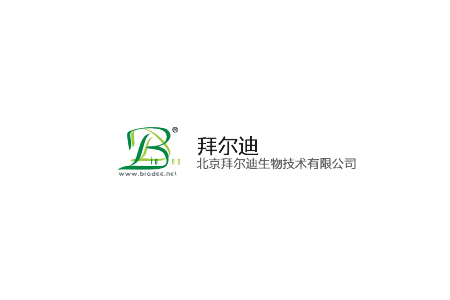

貨號
產(chǎn)品規(guī)格
售價(jià)
備注
BN40514R-100ul
100ul
¥2360.00
交叉反應(yīng):Rat(predicted:Human,Mouse,Dog,Pig,Cow,Horse,Rabbit) 推薦應(yīng)用:IHC-P,IHC-F,ICC,IF,ELISA
BN40514R-200ul
200ul
¥3490.00
交叉反應(yīng):Rat(predicted:Human,Mouse,Dog,Pig,Cow,Horse,Rabbit) 推薦應(yīng)用:IHC-P,IHC-F,ICC,IF,ELISA
產(chǎn)品描述
| 英文名稱 | LPHN1 |
| 中文名稱 | 蛛毒素受體抗體 |
| 別 名 | Calcium independent alpha latrotoxin receptor 1; Calcium-independent alpha-latrotoxin receptor 1; CIRL-1; CIRL1; CL1; CLIBA; G protein-coupled receptor for alpha-Latrotoxin; KIAA0821; Latrophilin 1; Latrophilin-1; Latrophilin1; LEC2; Lectomedin 2; Lectomedin-2; LPHN 1; LPHN1; LPHN1_HUMAN. |
| 研究領(lǐng)域 | 細(xì)胞生物 神經(jīng)生物學(xué) 信號轉(zhuǎn)導(dǎo) G蛋白信號 |
| 抗體來源 | Rabbit |
| 克隆類型 | Polyclonal |
| 交叉反應(yīng) | Rat, (predicted: Human, Mouse, Dog, Pig, Cow, Horse, Rabbit, ) |
| 產(chǎn)品應(yīng)用 | ELISA=1:5000-10000 IHC-P=1:100-500 IHC-F=1:100-500 ICC=1:100-500 IF=1:100-500 (石蠟切片需做抗原修復(fù)) not yet tested in other applications. optimal dilutions/concentrations should be determined by the end user. |
| 分 子 量 | 160kDa |
| 細(xì)胞定位 | 細(xì)胞膜 |
| 性 狀 | Liquid |
| 濃 度 | 1mg/ml |
| 免 疫 原 | KLH conjugated synthetic peptide derived from human LPHN1:201-300/1474 <Extracellular> |
| 亞 型 | IgG |
| 純化方法 | affinity purified by Protein A |
| 儲 存 液 | 0.01M TBS(pH7.4) with 1% BSA, 0.03% Proclin300 and 50% Glycerol. |
| 保存條件 | Shipped at 4℃. Store at -20 °C for one year. Avoid repeated freeze/thaw cycles. |
| PubMed | PubMed |
| 產(chǎn)品介紹 | This gene encodes a member of the latrophilin subfamily of G-protein coupled receptors (GPCR). Latrophilins may function in both cell adhesion and signal transduction. In experiments with non-human species, endogenous proteolytic cleavage within a cysteine-rich GPS (G-protein-coupled-receptor proteolysis site) domain resulted in two subunits (a large extracellular N-terminal cell adhesion subunit and a subunit with substantial similarity to the secretin/calcitonin family of GPCRs) being non-covalently bound at the cell membrane. Latrophilin-1 has been shown to recruit the neurotoxin from black widow spider venom, alpha-latrotoxin, to the synapse plasma membrane. Alternative splicing results in multiple variants encoding distinct isoforms.[provided by RefSeq, Oct 2008] Function: Calcium-independent receptor of high affinity for alpha-latrotoxin, an excitatory neurotoxin present in black widow spider venom which triggers massive exocytosis from neurons and neuroendocrine cells. Receptor for TENM2 that mediates heterophilic synaptic cell-cell contact and postsynaptic specialization. Receptor propably implicated in the regulation of exocytosis. Subcellular Location: Cell membrane. Cell projection; axon. Cell projection; growth cone. Cell junction; synapse. Cell junction; synapse; presynaptic cell membrane. Cell junction; synapse; synaptosome. Colocalizes with TENM2 on the cell surface, across intercellular junctions and on nerve terminals near synaptic clefts. Post-translational modifications: Autoproteolytically cleaved into 2 subunits, an extracellular subunit and a seven-transmembrane subunit. This proteolytic processing takes place early in the biosynthetic pathway, either in the endoplasmic reticulum or in the early compartment of the Golgi apparatus. Similarity: Belongs to the G-protein coupled receptor 2 family. LN-TM7 subfamily. Contains 1 GPS domain. Contains 1 olfactomedin-like domain. Contains 1 SUEL-type lectin domain. SWISS: O94910 Gene ID: 22859 Database links: Entrez Gene: 22859 Human Entrez Gene: 330814 Mouse SwissProt: O94910 Human SwissProt: Q80TR1 Mouse Unigene: 94229 Human Unigene: 260733 Mouse Unigene: 10776 Rat Important Note: This product as supplied is intended for research use only, not for use in human, therapeutic or diagnostic applications |
